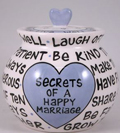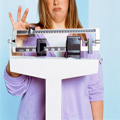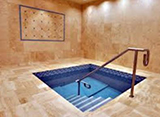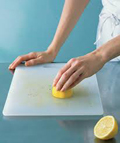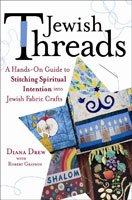WHATS WRONG WITH HIGH HEELS
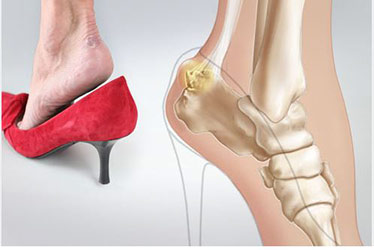
PROBLEMS
Ultra-High Heels
Heels are getting higher & higher, podiatrists like to call it shoe-icide.
Ultra-high heels can lead to everything from ankle sprains to chronic pain.
Pump Bump
- Whether they're sky-high or mid-heel, this style is notorious for causing a painful knot on the back of the heel.
- The rigid material presses on a bony deformity some women have called a 'pump bump.'
- The pressure leads to blisters, swelling, bursitis, even pain in the Achilles tendon.
- Ice, orthotics & heel pads may provide pain relief, along with better shoes.
- The bony protrusion is permanent.
Unnatural Foot Position
- Ultra-high heels force the feet into a position that puts stress on the ball of the foot.
- At this critical joint, the long metatarsal bones meet the pea-shaped sesamoid bones
the toe bones (phalanges). - Too much pressure can inflame these bones or the nerves that surround them.
- Chronic stress to the foot bones can even lead to hairline fractures.
Go Low
- Switching to lower heels will help you avoid problems with the metatarsal bones.
- The lower you go, the more natural your foot position will be.
- It's recommends to select heels that are no more than 2 inches high & even those
should be worn in moderation.
Ankle Sprains
- All high heels boost the risk of an ankle sprain.
- The most common problem is a lateral sprain, which happens when you roll onto the outside
of the foot. - This stretches the ankle ligaments beyond their normal length.
- A severe sprain may tear the ligaments.
- A sprained ankle should be immobilized & may need physical therapy to heal properly.
- The risk of developing osteoarthritis rises with a severe sprain or fracture of the ankle.
Stilettos
- Although all high heels can cause problems, the ultra narrow heels of stilettos are
particularly risky. - The weight is pinpointed on one area that makes you wobble like you're walking on stilts.
- The result is that you're more likely to trip & sprain your ankle.
Ballet Flats
- Ballet flats are like dainty shoes to walking on cardboard.
- There's no arch support whatsoever.
- That keeps the feet from functioning optimally & can lead to knee, hip & back problems.
- Poor arch support is also associated with a painful foot condition called plantar fasciitis.
- If you love the look of ballet flats, over-the-counter inserts may help prevent mild foot pain.
- Heel pads can provide extra cushioning for achy heels.
- Custom orthotics can ease a whole range of foot pains & problems.
- Podiatrists prescribe these inserts to provide arch support & reduce pressure on
sensitive areas. - Prescription orthotics can be pricey, but are sometimes covered by insurance
Chunky Heels
- A chunky heel has more surface area & distributes your weight more evenly.
- This makes the feet much more stable when compared to stilettos or spindle heels.
- Although thick high heels can still put stress on the ball of the foot, they may reduce
the tripping hazard by minimizing unsteadiness.
Flip-Flops
- Flip-flops offer very little protection.
- The risk of getting splinters or other foot injuries is higher when the feet are so exposed.
- People with diabetes should not wear flip-flops, because simple cuts & scrapes can lead
to serious complications. - In addition, many flip-flops provide no arch support.
- Like ballet flats, they can aggravate plantar fasciitis and cause problems with the knees,
hips, or back.
Plantar Fasciitis
- A band of tissue called the plantar fascia runs along the bottom of the foot.
- It pulls on the heel when you walk & it works best with the proper arch in your foot.
- Walking barefoot, or in flimsy shoes without sufficient arch support, can overstretch, tear
or inflame the plantar fascia. - This common condition can cause intense heel pain & resting the feet only provides
temporary relief.
Fitted Flops
- Sporty, fitted sandals & other toning shoes are designed for a more intense workout
while walking. - The American Council on Exercise says there's no evidence to support that claim, but
they may have other benefits. - The thick sole keeps your foot off the ground & away from debris.
- They do have really good arch support.
- Several have a seal of approval from the American Podiatric Medical Association.
Platform Shoes
- Platform shoes & wedges tend to have rigid foot beds.
- That makes walking difficult.
- Your foot is trying to bend a certain way but the shoe is fighting you because it's so rigid.
- If the heel of the platform is much higher than the toe area, the shoe also puts pressure
on the metatarsal bone. - Although still not recommended, a flatter platform shoe may put less strain on your feet
than it seems. - Look for a wide wedge or platform that is nearly parallel with the ground.
- This will lessen the pressure on the ball of the foot.
- However, the rigid sole remains a barrier to the natural walking motion.
Pointy Toes
- They might be stylish, but shoes with pointy toes squeeze the entire front of your
foot together. - After time, this can cause nerve pain, bunions, blisters & hammertoes.
- Some women even develop bruises under their toenails from the constant pressure.
Bunions
- A bunion is a painful lump at the base of the big toe, which may cause the toe to
bend unnaturally. - It forms when the tissue or bone at the base joint gets displaced.
- This may happen after years of abnormal pressure & movement.
- Pointy-toed shoes are a common factor, which explains the prevalence of bunions
among women.
Toe Deformities
- High heeled shoes push too much body weight toward the toes & then squeeze
them together. - Over time, the result can be a hammertoe (early stage, lower right), abnormal bends
in the toe joints that can gradually become rigid. - Surgery is sometimes needed to relieve the pain of severe hammertoe.
- Crowding can cause other toe deformities, along with continuous shoe friction, leading
to painful corns & calluses.
Wide Toe Box
- You can avoid the pointy toe perils by selecting boxier shoes.
- If that style doesn't appeal to you, look for shoes that slope to a point beyond the edge
of your toes. - A healthy style won't pinch the tips or sides of the toes. Use a softer material, rather than
stiff leather.
Heeless Shoes & Performance Pumps
- 12-inch mega-heels are equally risky.
- Putting so much stress on the ball of your foot can cause bone & nerve damage & pain.
- Many women are unwilling to trade style for comfort, but you may not have to choose
between the two. - Performance pumps offer a sound compromise, taking both fashion & your health into consideration.
- They are typically made with reinforced heels, athletic shoe construction & more wiggle
room for your toes.
Wrong Size Shoes
- 9 out of 10 women are wearing shoes that are too small.
- The consequences can be harsh.
1. Calluses
2. Blisters Bunions
3. Corns
- The constant rubbing can irritate the joints in the foot & lead to arthritis.
- Research suggests many kids are also wearing the wrong shoe size, which puts them
at risk for foot deformities as they grow.
Measure Your Feet
- Before buying new shoes, have a professional measure the length & width of your feet
at the end of the day, while you're standing. - For unusually flat feet or high arches, an exam by a podiatrist may be warranted.
- These conditions can increase the risk of osteoarthritis.
- Early treatment & use of proper footwear may help to avoid unnecessary wear & tear
on the joints of the foot.
3 Tips for Better Shoes
If you're ready to do right by your feet , here are 3 more tips:
- Make sure the shoe bends at the toe box, but is not too flexible.
- Make sure there is a sufficient arch support.
- Choose a chunky heel that is less than 2 inches high
♦♦♦♦♦
Buying A Wig | Face Fixes
Make Up For Shabbas | Kosher Makeup | Modesty
♦♦♦♦♦
Copyright © 2012 -2018 KosherWoman.com
All rights reserved



